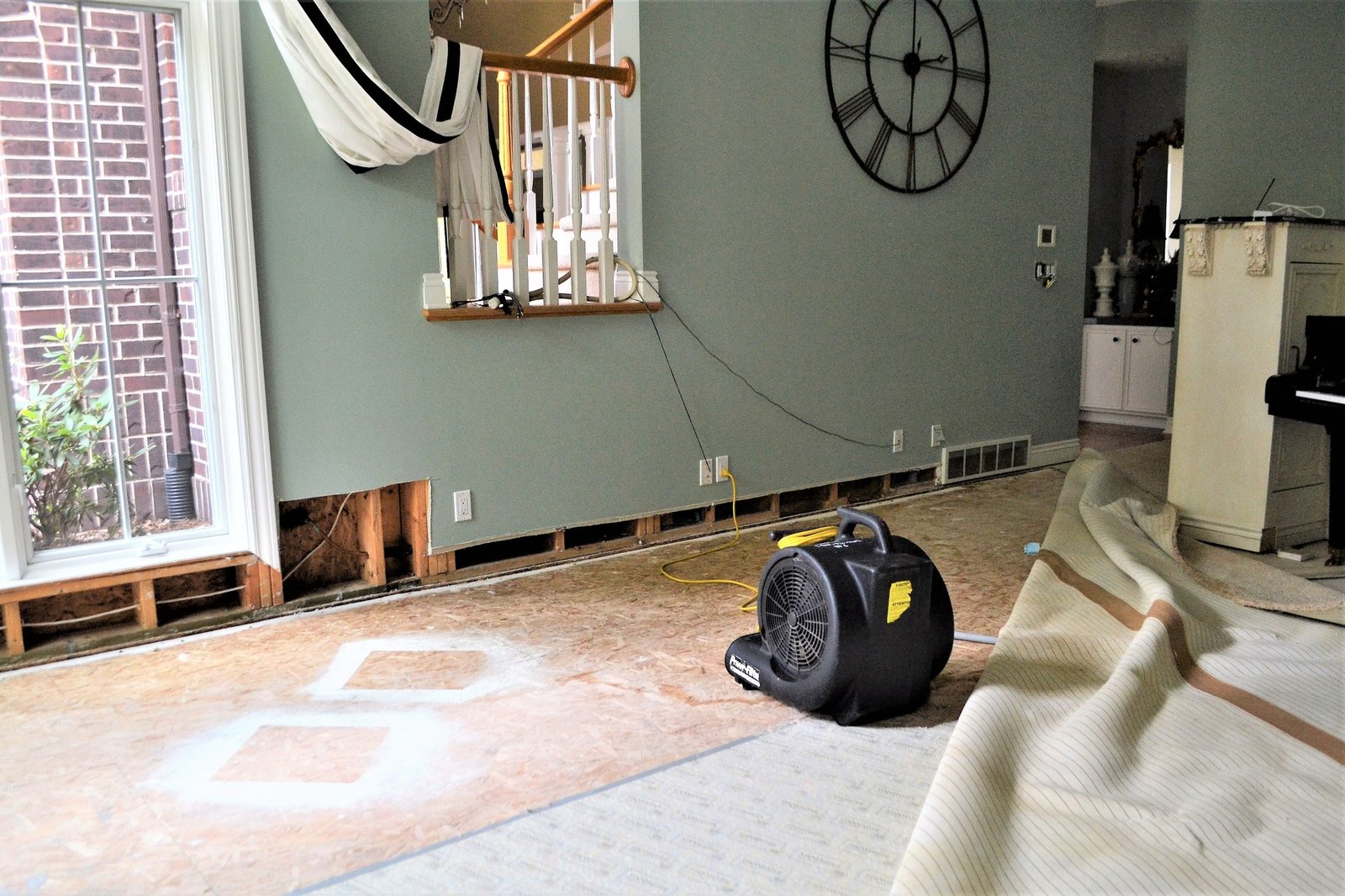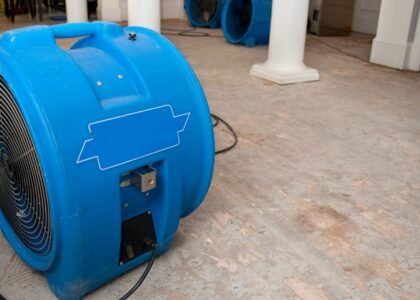When carpet gets wet, it’s not just the visible dampness you need to worry about. Hidden moisture under padding or beneath floorboards can worsen damage if not handled properly. This blog walks you through the full restoration process used by professionals, what you can expect, and how each step adds value.
What Happens After You Call for Help
Once you reach out (via our contact page), professional teams usually follow this flow:
- On-site Assessment
- Evaluate moisture levels in carpet, padding, walls, subfloors
- Identify water type (clean, gray, black)
- Determine scope of visible and hidden moisture
- Water Extraction
- Use powerful pumps and vacuums
- Extract water from carpet fibers and padding
- Remove standing water completely
- Drying & Dehumidification
- Air movers to circulate air
- Industrial dehumidifiers to draw moisture from air and materials
- Monitor moisture until readings show safe levels
- Cleaning & Sanitization
- Remove dirt, bacteria, mildew
- Address odors
- Special treatment if water was unsanitary
- Carpet Repair or Reinstallation
- Replace padding if irreparable
- Stretch or repair carpet to remove ripples or wrinkles
- Secure edges, seams, and re-attach carpet
- Final Inspection
- Moisture test to ensure dryness
- Visual check for stains, smell, and safety
Tools & Technologies Used
Professionals use equipment you likely don’t have at home. Some common tools:
- Moisture meters & thermal imaging cameras
- Industrial water extractors (pump + vacuum)
- Air movers & drying mats
- Commercial dehumidifiers
- Cleaning agents & antimicrobial treatments
These tools help reach water that’s not visible on the surface and ensure thorough restoration.
How Long the Process Takes
The time depends on several factors:
- How much water was involved
- The type of water (clean, gray, black)
- The carpet material and padding
- Environmental conditions (humidity, temperature)
- Amount of hidden moisture under flooring
In many cases, water removal can be done in hours; drying may take days; final cleaning and repair after that. The faster you act, the quicker the process.
Signs Repair Was Successful
After restoration, you should expect:
- No musty or mildew smell
- Carpet feels even and well-stretched
- Padding beneath feels dry
- No discoloration or stain spots
- Safe walking surfaces with no slip or electrical risk
If any of these issues persist, additional work may be needed.
When Repair Isn’t Enough
Sometimes, damage is too extensive:
- Carpet fibers or padding severely rotted
- Black water exposure that saturated base layers
- Structural damage beneath carpet (subfloor wood rot)
In these situations, full replacement of some materials may be necessary. A professional assessment will help you understand whether repair or partial replacement is best.
Connecting Back to Prevention
Once repaired, keeping your home safe from future events is key. As discussed in our previous post, you can:
- Keep gutters clear
- Monitor plumbing and appliance hoses
- Grade around your foundation
- Use water sensors
These habits help minimize future repair costs and keep carpets in good condition.
For detailed insight into the service steps, tools, and what to expect, see our Carpet Water Damage Repair and Restoration page. If you’re ready for help, reach out via our contact page.





